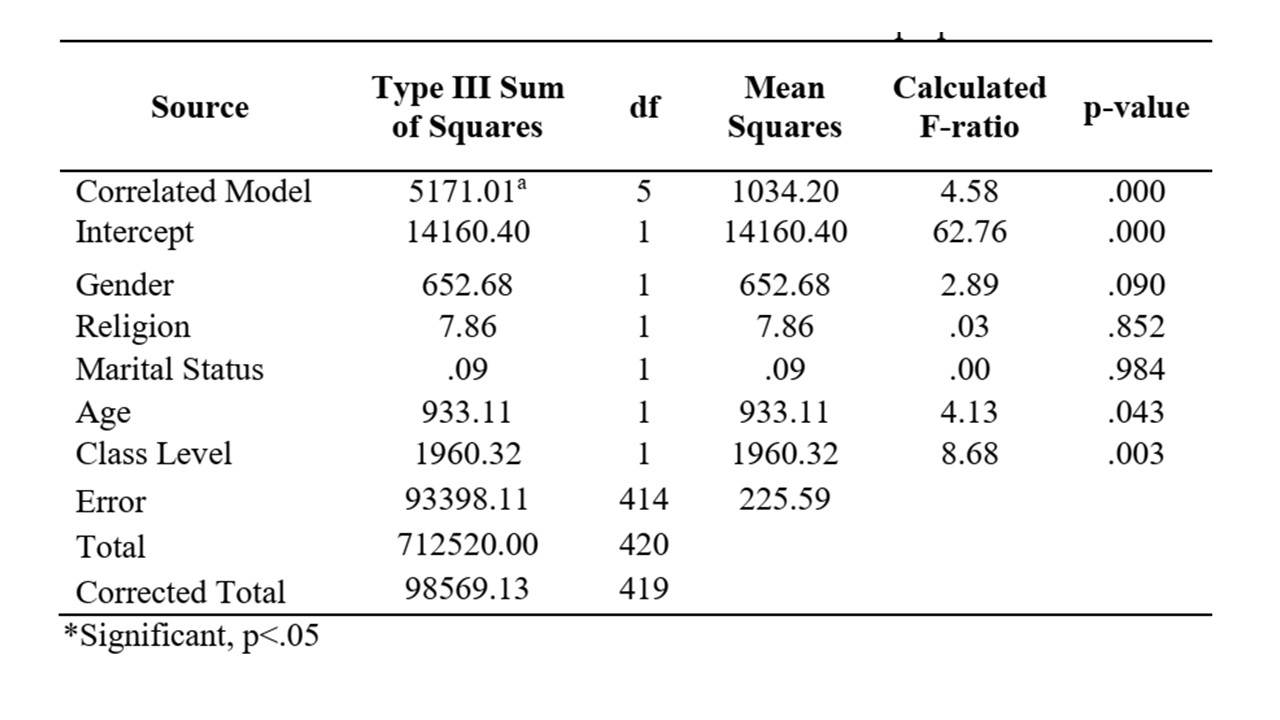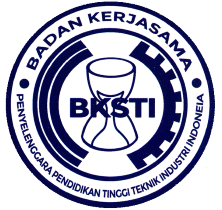PREVALENCE AND FORMS OF ONLINE HARASSMENT AMONG UNDERGRADUATES OF A NIGERIAN UNIVERSITY
DOI:
https://doi.org/10.12928/spekta.v2i1.2972Keywords:
Forms, Harassment, Prevalence, Online harassment, Undergraduates.Abstract
The upsurge in accessing and utilizing the internet and social networking sites for social activities predisposes adolescents and young adults globally to online harassment, Nigerian undergraduates inclusive. The impacts of online harassment have attracted many research interests, especially in the developed world and the dearth of inquiries among Nigerian undergraduates. This work inquired about the prevalence and forms of online harassment perpetrated by undergraduates in a Nigerian university. A descriptive research design was adopted, data were amassed utilizing a three-sectioned self-report form administered on a sample of 420 undergraduates. The selection of the sample was made following a multistage procedure. Percentage and univariate analysis techniques were used for data analysis. The result of the inquiry revealed widespread online harassment among the undergraduates of the university. All the forms of online harassment assessed were perpetrated; dog pilling topped the list (63.1%), followed by trolling (44.0%). The high rate of occurrence demands the urgent attention of the university authority, professionals across relevant fields should create awareness; the need to develop interventions and policies to deal with online harassment is obvious
References
Andjelic, J. (2019). WhatsApps Statistics: revenue, usage, and history. https://fortunly.com/statistics/whatsapp_statistics.
Awan, I., Zempi, I (2015). We fear for our lives: offline and online experience of anti-muslim hostility. https://tellmamauk.org/wp-content/upload/2017/05/We-Fear-For-Our-Lives.pdf .
Barlow, C & Awan, I (2016). “You need to be sorted out with a knifeâ€: The attempted online silencing of women and people of Muslim faith within academia. https://doi.org/10.1177/2056305116678896. Social Media + Society 2, 1-11.
Chakraborti, N., Garland, J. (2015). Hate crime: Impacts, causes, and consequences. London: SAGE.
Duggan, M. (2017). Online Harassment. The Pew Research Centre (11 July 2017) https://www.pewresearch.org/internet/2017/07/11/online-harassment-2017/.
Eckert, S. (2017). Fighting for recognition: Online abuse of women bloggers in Germany, Switzerland, the United Kingdom, and the United States. New Media and Society P.14614444816688457.
Elias, J., Magdalena, P (2019). Google’s rock path to email domination https://www.cnbc.com/2019/10/26/gmail-dominates-consumer-email-with-1point5-billion-users.html.
Englander, E. (2017). Defining cyber-bullying. Pediatrics 140 (2), 148-151.
Feinberg, T., Robey, N. (2008). Cyberbullying. Principal Leadership. 9(1), 10-14.
Girl attitudes survey (2016). Girl Guiding https://www.girlguiding.org.uk/globalassets/docs-and-resources/research-and-campaigns/girls-attitudes-survey-2016.pdf.
Geach, N., Haralambous, N. (2009). Regulating harassment: Is the law fit for the social networking age? The Journal of Criminal Law
Hall, N. (2013). Hate Crime. London: Routledge.
Harris, A. (2013). Who Coined the Term Cat Fish.
Henry, N., Powell, A. (2016). Sexual violence in the digital age: the scope and limits. Criminal Law, Social and Legal Studies 25 (4), 397-418.
Home Office (2017). Statistical Bulletin.
Jenaro C., Flores, N., Vega, V., Cruz, M., Perez, M. C., Torres, V. A. (2017). Cyber-bullying among adults with intellectual disabilities: Some preliminary data. Research in Developmental Disabilities, 72, 265-274.
Kennedy, M. A., Taylor, M. A. (2010). Online harassment and victimization of College Students. Justice Policy Journal 7(1), 2-21.
Khairi, A.N., Ma’ruf, F., Fitriani, S., Fahana, J. (2020). Sistem Informasi Keuangan Program Pengembangan Kewirausahaan FTI UAD. SPEKTA Jurnal Pengabdian Kepada Masyarakat: Teknologi dan Aplikasi 1(2), 55-64. https://doi.org/10.12928/spekta.v1i2.3087.
Kowalski, R. M., Limber, S. P (2007). Electronic bullying among middle-school students. Journal of Adolescence Health 41(1), 22-30. doi.org 10.1016/j.adohealth.2007.08.017.
MacDonald, C. D., Roberts-Pittman, B. (2010). Cyberbullying among students: Prevalence and demographic differences. Procedia-Social and Behavioral Sciences 9, 2003-2009.
Maltby, J. (2017). Implicit theories of online trolling: Evidence that attention-seeking conceptions are associated with increased psychological resilience. British Journal of Psychology, 448-466.
Muhinat, B.B. (2020). Educating Border Dwellers to Promote Peace and Security in an Electoral Process: Perception of Community Members’, Zamfara State. SPEKTA Jurnal Pengabdian Kepada Masyarakat: Teknologi dan Aplikasi 1(2), 73-84.
Myers, C. A., Cowie, H., (2017). Bullying at university: the social and legal contexts of cyber-bullying among university students. Journal of Cross-Cultural Psychology, 48(8), 1172-1182.
Novo, F., Pereira, F., Matos, M. (2014). Cyber-aggression among Portuguese adolescents: A study on perpetration, victim-offender overlap, and parental supervision. International Journal of Cyber Criminology 8(2), 94-110.
Nigerian Communication Commission. (2019). Subscriber Statistics. https://www.ncc.gov.ng>statistic-reports>subscriber-data.
Nwachukwu, C., Onyenankeya, K. (2017). Use of smartphones among college students in Nigeria: revelation and reflections. DOI:10.1080/0976691X2017.1396007 https://www.researchgate.net/publication/322210927_Use_of_Smartphones_among_College_Students_in_Nigeria_Revelations_and_Reflections.
Ofcom Annual Report. (2017). Adults Media Use and attitudes. https://www.ofcom,org,UK.
Olumide, A., Adams, P., Amode, K. O. (2015). Prevalence and correlates of the perpetration of cyberbullying among in-school adolescents in Oyo state, Nigeria. International Journal of Adolescents Medicine and Health 28(2). Doi:10.1515/ijamh-2015-0009.
Peterson, J., Densely, J. (2017). Cyber violence: What do we know and where do we go from here? Aggression and Violent Behaviour 34, 193-200.
Reports on ConsumerLab Trends and Insight. (2019).
Software Freedom Law Centre (SFLC, 2016) Online Harassment: A Form of Censorship. New Delhi: SFLC. in https://sflc.in/sites/default/files/wp-content/uploads/2016/11/OnlineHarassment_SFLCin.pdf.
Annual Report (2018/19). University of Ilorin academic planning office. University of Ilorin, Nigeria.
Ybarra, M. L., Mitchell, K. J. (2007). Prevalence and frequency of Internet harassment instigation: Implications for adolescent health. Journal of Adolescent Health, 41, 189–195. doi:10.1016/j.jadohealth.2007.03.005.
Zachilli, T. L., Valiero, C. Y (2011). The knowledge and prevalence of cyberbullying in a college sample Journal of Scientific Psychology, 11-23

Downloads
Published
How to Cite
Issue
Section
License
Copyright (c) 2021 Mulikat Ladi Mustapha, Shuaib Abolakale Muhammad, Faith Folusho Olowoniyi

This work is licensed under a Creative Commons Attribution-ShareAlike 4.0 International License.
Authors who publish with SPEKTA (Jurnal Pengabdian Kepada Masyarakat: Teknologi dan Aplikasi) agree to the following terms:
- Authors retain copyright and grant the journal the right of first publication with the work simultaneously licensed under a Creative Commons Attribution License (CC BY-SA 4.0) that allows others to share the work with an acknowledgment of the work's authorship and initial publication in this journal.
- Authors are able to enter into separate, additional contractual arrangements for the non-exclusive distribution of the journal's published version of the work (e.g., post it to an institutional repository or publish it in a book), with an acknowledgment of its initial publication in this journal.
- Authors are permitted and encouraged to post their work online (e.g., in institutional repositories or on their website) prior to and during the submission process, as it can lead to productive exchanges, as well as earlier and greater citation of published work.

This work is licensed under a Creative Commons Attribution-ShareAlike 4.0 International License.












